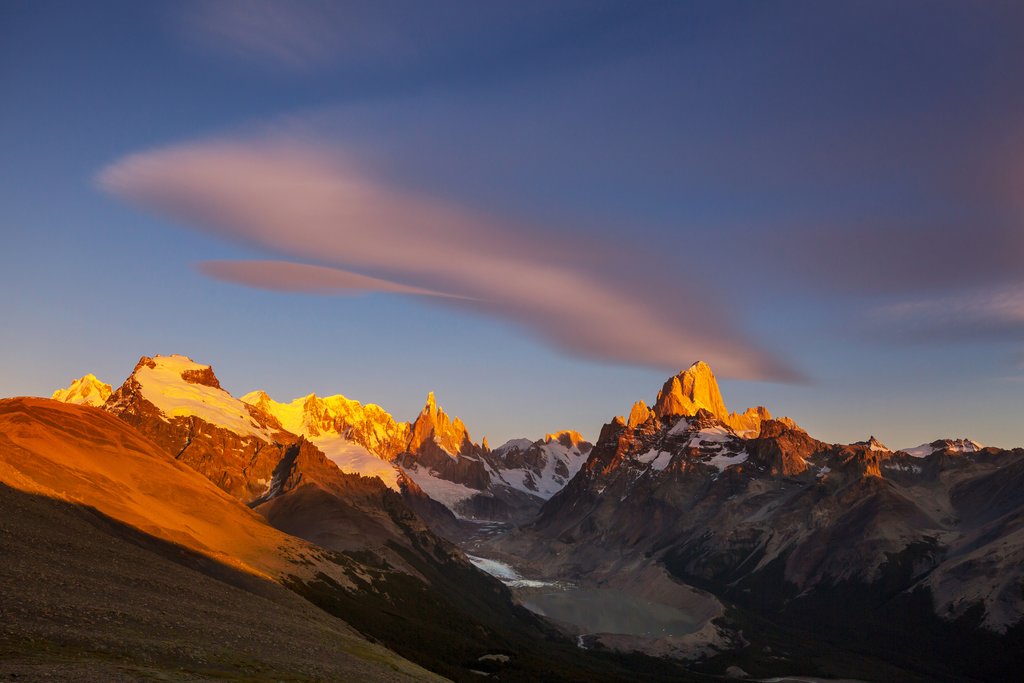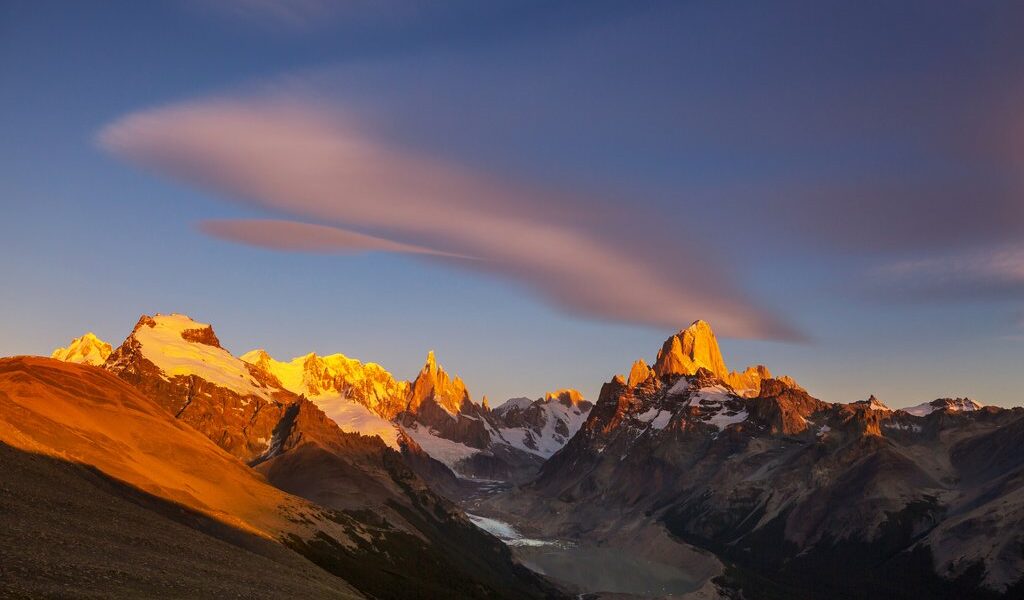
When is the best time to visit Argentina? It depends on what you want to do. Winter is for skiing and visiting the Northwest, summer is for hitting Patagonia’s trails, and the shoulder seasons of spring and fall are beautiful in Buenos Aires (and almost everywhere else!).
## Embarking on an Argentinian Adventure: A Seasonal Guide
Argentina, a land of dramatic landscapes, vibrant culture, and passionate spirit, beckons travelers year-round. Deciding on the best time to visit this vast and diverse country can feel like a challenge. Argentina stretches over 3,000 miles, offering a kaleidoscope of climates and experiences. From the subtropical north to the icy landscapes of Tierra del Fuego, each season paints a unique picture of this South American gem. Let’s explore the best times to discover the wonders of Argentina, region by region, ensuring an unforgettable journey tailored to your interests.
Many visitors flock to Argentina during the months of December and January. This period marks the peak of summer in the southern hemisphere, making it an ideal time to immerse yourself in the breathtaking landscapes of Patagonia, explore the serene beauty of the Lake District, or unwind on the inviting coastal beaches. Imagine hiking through stunning mountain trails under the warm Patagonian sun, or basking in the gentle breeze as you relax on the shores of the Atlantic.
However, it’s worth noting that this is not always the most opportune time to visit Buenos Aires. During these months, the capital city experiences soaring temperatures that can make exploring the urban landscape less comfortable. Power outages can also be a recurring issue during the peak summer months. Similarly, venturing into the north interior of Argentina during this period can be challenging, as the heat and humidity levels can become quite intense and potentially uncomfortable for some travelers.
The southern hemisphere’s winter, spanning from June to August, presents an entirely different perspective on Argentina. This season is particularly appealing for those seeking thrilling winter sports adventures, as it provides excellent opportunities for skiing and snowboarding in the Argentinian Andes. Several world-class ski resorts offer pristine slopes and breathtaking views.
However, it’s essential to be aware that outside of the ski resorts, many attractions in the southernmost provinces of Argentina tend to close down during the winter months. This is due to the challenging weather conditions and reduced tourist activity. On the other hand, winter unveils the perfect time to explore the northern regions of Argentina, including Salta, Iguazu, and other captivating destinations. The weather in the north during this period is typically pleasant, with clear skies and comfortable temperatures, making it ideal for sightseeing and outdoor activities.
For those who prefer milder weather and a more relaxed pace, the shoulder seasons – spring (September to November) and autumn (March to May) – offer the most delightful conditions for exploring Argentina. During these transitional periods, the weather is generally pleasant and conducive to a wide range of activities, including hiking, sightseeing, wine-tasting, and simply enjoying the vibrant atmosphere of the cities and towns.
Picture yourself savoring a freshly brewed coffee at a charming sidewalk café, soaking in the sights and sounds of daily life. The autumn months coincide with the harvest time in the renowned wine-growing region of Mendoza. This is an excellent opportunity to witness the winemaking process firsthand and indulge in the exquisite flavors of Argentinian wines. Furthermore, the cooler temperatures in Buenos Aires during autumn make it an ideal time to explore the city’s historical landmarks, cultural attractions, and bustling neighborhoods.
As spring arrives, Argentina bursts into a kaleidoscope of colors, with flowers and foliage adorning the landscapes. Buenos Aires comes alive with a busy schedule of outdoor fairs and festivals, showcasing the city’s vibrant culture and artistic expression. The shoulder seasons offer the perfect balance of pleasant weather, fewer crowds, and a wide array of activities, making them an excellent choice for experiencing the best of Argentina.
## Delving into Argentina’s Diverse Regions
Argentina’s vastness, stretching over 3,000 miles along the South American continent, second only to Brazil, makes it difficult to create a single, all-encompassing description of the country. Its regions and climates present distinct characteristics. However, for the purposes of exploring major tourist destinations, we can roughly divide the country into several key areas, each offering a unique experience.
First, there’s the north, a region brimming with cultural richness and natural beauty. This area encompasses Jujuy, Salta, and Tucumán in the northwest, known for their stunning landscapes, indigenous cultures, and historical significance. It also includes the majestic Iguazu waterfalls in the northeast, a natural wonder that will leave you breathless.
Next, we journey to the Andean wine region, encompassing Mendoza and San Juan. This area is a paradise for wine lovers, offering world-class vineyards, stunning mountain scenery, and a vibrant culinary scene. You can spend your days touring wineries, sampling exquisite wines, and indulging in delicious regional cuisine.
Moving towards the heart of the country, we encounter the central Pampas, a vast and fertile plain that includes the bustling cities of Córdoba and Buenos Aires. This region offers a blend of urban sophistication and rural charm, with opportunities to explore historical landmarks, experience vibrant nightlife, and immerse yourself in the local culture.
Finally, we arrive at Patagonia, a vast and awe-inspiring region that stretches from the Lake District around Bariloche all the way down into Chubut, Santa Cruz, and ultimately, to Tierra del Fuego. Patagonia is a land of dramatic landscapes, towering mountains, pristine lakes, and abundant wildlife. It’s a paradise for outdoor enthusiasts, offering opportunities for hiking, trekking, kayaking, and wildlife viewing.
## Argentina in the Summertime: December to February
During the Argentinian summertime, which spans from December to February, it is advisable to bypass the steamy northern regions of the country and head directly for the refreshing lakes, pristine beaches, and wide-open spaces of Patagonia. This is the high season for outdoor adventurers, who flock to the hiking trails during the post-Christmas period.
As a result, you can expect to pay top prices for accommodations and flights. It is crucial to plan your trip well in advance to secure your desired accommodations and flights. Despite the higher prices and increased crowds, you will be rewarded with sunny weather and optimal conditions for a wide range of outdoor activities, including trekking, biking, camping, rafting, and wildlife viewing.
Any itinerary that takes you to the south of Argentina will inevitably involve a stopover in Buenos Aires. While days are long and hot in the capital city during January, with average temperatures reaching 76°F (25°C) and often exceeding that, it is not necessarily the ideal season for extensively exploring the city.
However, if you don’t mind the heat, you can benefit from the relative peace and quiet that descends upon Buenos Aires in January. Many locals leave the city, seeking respite from the heat at the beach or in the mountains for their summer vacations. Once the sun sets, the temperatures drop sufficiently to allow you to enjoy an al fresco dinner, attend an outdoor concert, or take a leisurely bicycle ride around the city.
## Embracing Autumn’s Charm: March to May
If you are a wine enthusiast, planning your trip to coincide with the autumn months, from March to May, will undoubtedly be a rewarding experience. This is the prime season to visit Argentina’s renowned wine-growing region. Mendoza serves as the epicenter for wine tasting, hosting numerous wine festivals and winery tours.
In addition to the wine-related activities, you can indulge in a wealth of outdoor pursuits, ranging from cycling to horseback riding in the foothills of the majestic Andes Mountains. The weather during this season is generally comfortable, with average temperatures in April hovering around 63°F (17°C). However, if you encounter unseasonably warm weather, consider taking a drive north from Mendoza to the neighboring province of San Juan. This less touristy region specializes in perfectly chilled sparkling wine, offering a refreshing alternative.
This shoulder season is also an excellent time to visit Buenos Aires. Not only can you enjoy the lovely foliage and ideal weather for full days of walking and sightseeing, but hotel rates typically decrease after the busy tourist season of the southern hemisphere’s winter.
## Winter Escapes: June to August
Argentina’s ski resorts, primarily located in the southern regions of the country, have been gaining increasing international attention in recent years. While this is beneficial for local businesses, it may lead to larger crowds at popular ski resorts such as Chapelco, near San Martín de Los Andes, in the upcoming seasons. Despite this growing popularity, Argentinian resorts remain relatively undiscovered compared to their Chilean counterparts on the other side of the Andes.
Prepare to bundle up, as temperatures around Ushuaia, the southernmost city in the world and gateway to the world-class ski area around Cerro Castor, typically hover in the low 30s on the Fahrenheit scale (single digits in Celsius). More importantly, it is said that Patagonian destinations can experience all four seasons within a single day, so it is crucial to dress in layers to adapt to the changing weather conditions.
Outside of the ski centers, many tourist destinations in the southern regions of Argentina close down during the winter months. However, winter is the perfect time to explore the northern regions, where sunshine and comfortable temperatures create a welcoming atmosphere in Salta and the nearby wine region of Cafayate.
## Springtime Bliss: September to November
Many consider springtime, encompassing the months of September to November, to be the best time to visit Argentina. Buenos Aires transforms into a vision of lilac as jacaranda trees bloom throughout the city. Outdoor festivals enliven the city’s cultural scene, and temperatures average around 21°C or 70°F.
Simultaneously, the beaches on the Atlantic coast offer a pleasant experience without the overwhelming crowds. Patagonia and its national parks reopen for business, inviting visitors to explore their stunning landscapes. Furthermore, the oppressive heat of the north subsides, making it more comfortable to explore the region’s attractions.
While it may not be the wine harvest season, Mendoza remains a captivating destination in spring. The snowcaps on the Andes begin to melt, and the rivers rush with icy water, creating a breathtaking spectacle.
In conclusion, Argentina is a gem of a destination that can be enjoyed in all seasons. However, springtime truly stands out as the most favorable time to experience the country’s diverse offerings.
B-77

